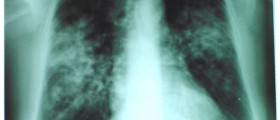
Immune system of the humans is consisted of different tissues and organs in the body, organized to provide necessary protection. Immune cells are located in the adenoids, Peyer’s patches, tonsils, spleen and lymph nodes.
About Lymph Nodes
Every lymph node is consisted of the fibrous capsule, subcapsular sinus, medulla and cortex, while cortex contains primary and secondary follicles and interfollicular zone. Cortex and its tissue are responsible for differentiation and proliferation of B and T lymphocytes. Medulla, on the other hand affects secretion of immunoglobulin in the lymph. Lymph is an ultra-filtrate of the blood, which passes through the lymph nodes. During this process about 99% of all harmful antigens get removed and the body remains healthy and well.
Lymph nodes can grow and change, depending on several factors. The location of lymph nodes in the body is one of important thing that determine the size of a lymph node, as well as the age of every specific person and his or her immunological status. Newborn babies have lymph nodes that can be barely visible. However, lymph nodes increase in size during the childhood. After adolescence, lymph nodes start to deteriorate and this process continues in the adulthood and old age.
Lymphadenopathy in Kids
Lymphadenopathy is medical term used to describe disease of the lymph nodes, cause the swelling and enlargement of these structures in the body. It can also be used as synonym for inflammation of the lymph node or lymphadenitis. The most common causes of enlargement and swelling of lymph nodes are infections, some auto-immune diseases or different malignant changes in the body.
Viral infections are the most frequently recognized causes of lymphadenopathy in children and the swelling is usually secondary reaction to antigen affecting the body. Other cause of childhood lymphadenopathy could include infection of lymph nodes, lymphomas (neoplastic lymphocytes or macrophages) and diseases such as Gaucher disease.
Gender and race are not important factors when it comes to lymhadenopathies in children and kids of both sexes and any race may experience this medical problem. Children of African descent in rare occasions are found to have lymphadenopathy due to sarcoidosis and Asian kids may have the same problem because of Kikuchi-Fujimori disease.
Adenopathies are common in very young children because their immune system has not been in contact with many antigens and infections. Cases of generalized adenopathy are rare and usually provoked by neonatal infection with CMV (cytomegalovirus). Adenopathies due to malignancy are even rarer and these can be associated with neuroblastoma in young kids, signs of leukemia in children or Hodgkin lymphoma in teenagers.
















Your thoughts on this
Loading...